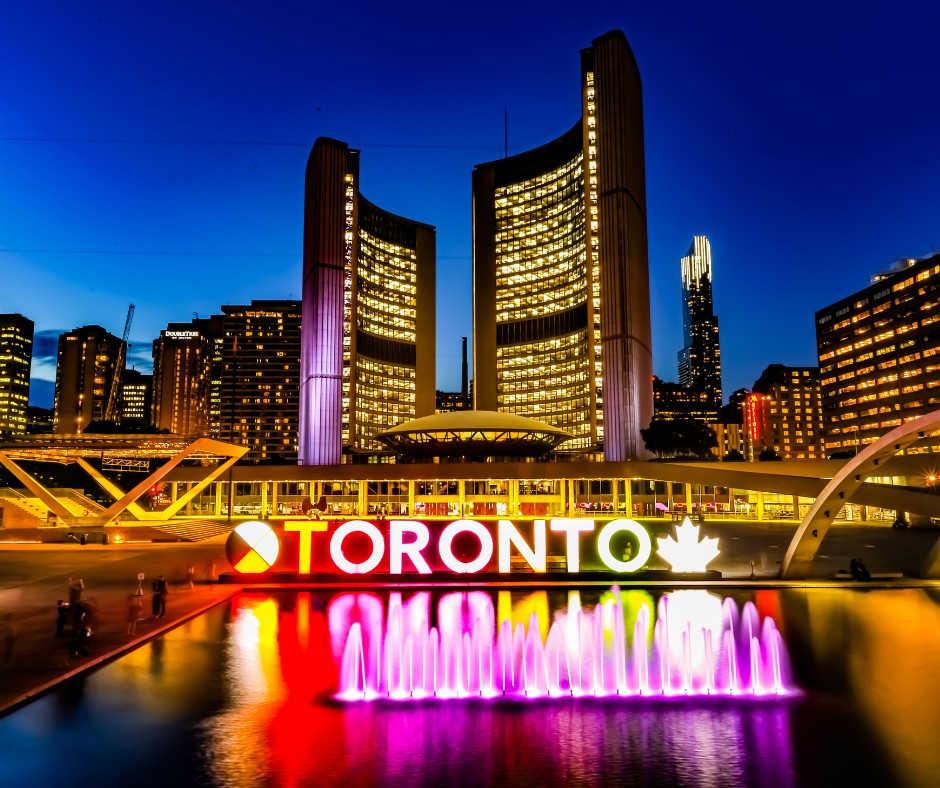Strategic Priorities Post-Pandemic: Equity, Affordability, Talent and Innovation
Toronto, the capital of the province of Ontario, is a major Canadian city and is a renowned centre for film and television

Cultural Heritage
The land upon which Toronto now stands has been the ancestral home of Indigenous peoples for 11,000 years. Its name originates from ‘TKaronto,’ a Mohawk word signifying ‘trees in standing water.’ Toronto occupies the traditional territory of numerous nations, including the Mississaugas of the Credit, the Anishnabeg, the Chippewa, the Haudenosaunee, and the Wendat peoples. Today, it is also home to a diverse population of First Nations, Inuit, and Métis peoples.
In the 20th century, Toronto established itself as the hub of commerce, industry, media, and culture in English-speaking Canada. Until the mid-1960s, Toronto’s cultural landscape was predominantly influenced by colonial and European traditions, reflected in the cultural institutions of the era, such as the city’s symphony, opera, ballet companies, and museums. Post-World War Two, there was a period of remarkable economic growth and nationalism, culminating in Canada’s Centennial celebration in 1967. This era saw the emergence of new cultural organisations, infrastructure, theatres, festivals, and science museums dedicated to telling contemporary Canadian stories.
Toronto is renowned worldwide as a centre for film, television, and digital media, contributing a record-breaking CAD $2.5 billion to the city’s economy in 2021. Its festivals, including the Toronto Caribbean Carnival, Pride Toronto, and the Toronto International Film Festival, are among the most celebrated globally. The city is also home to the largest number of artists in Canada, representing approximately one in six artists nationwide.

Embracing Change
Modern Toronto is a diverse city, with half of its population born outside Canada. The city is undergoing rapid development, with neighbourhoods in a continual state of transformation and renewal. While the creative and cultural sectors have elevated the city’s international profile, they have also faced challenges from development pressures and rising costs, especially in the downtown area. Additionally, the median income for individuals in the creative sector is less than half of the city’s average income. The Covid-19 pandemic exacerbated these pressures, with the sector being one of the hardest hit by lockdown restrictions.
The Role of Policymaker
During the pandemic, the City swiftly implemented grants and policies to support creatives and the cultural sector. However, it also recognised that these measures alone were insufficient. The sector requires sustained support to become more equitable and affordable while fostering a diverse workforce that represents all of the city’s communities. As part of its long-term planning, the City is working to make arts grants more equitable, transparent, and accountable. This includes increasing the availability of arts spaces, supporting digital development, and promoting greater diversity in sector leadership.
This commitment to providing a voice to all citizens in a diverse city has also materialised in the public realm. In response to activism and a citizen petition in 2020, the City is renaming a major thoroughfare, currently known as Dundas Street, due to its association with a British politician who played a role in delaying the abolition of the Transatlantic Slave Trade in the 1790s. This is likely just the beginning of a broader reassessment of statues and naming issues. The focus will not only be on what is removed but also on better representation for various communities, including racialised communities, Indigenous groups, and women, in the public realm.
The Future
These priorities are also shaping Toronto’s Public Art Strategy for the decade leading up to 2030. Already a leader in public art, Toronto aims to make public art commissioning more responsive to Indigenous people and racialized communities, broadening representation beyond Toronto’s early European influences. This vision was a cornerstone of ArtworxTO: Toronto’s Year of Public Art in 2021-22, serving as the public face and test bed for the broader strategy.
As the City navigates the post-pandemic era, its cultural policy focuses on equity and inclusion, affordable spaces, and nurturing talent and innovation. These priorities will enable culture to flourish, yielding significant benefits in economic vitality, quality of life, and social inclusion.
Images copyright © Getty Images / Canva; City of Toronto




